Int'l support must for inclusive Rohingya education: Unesco
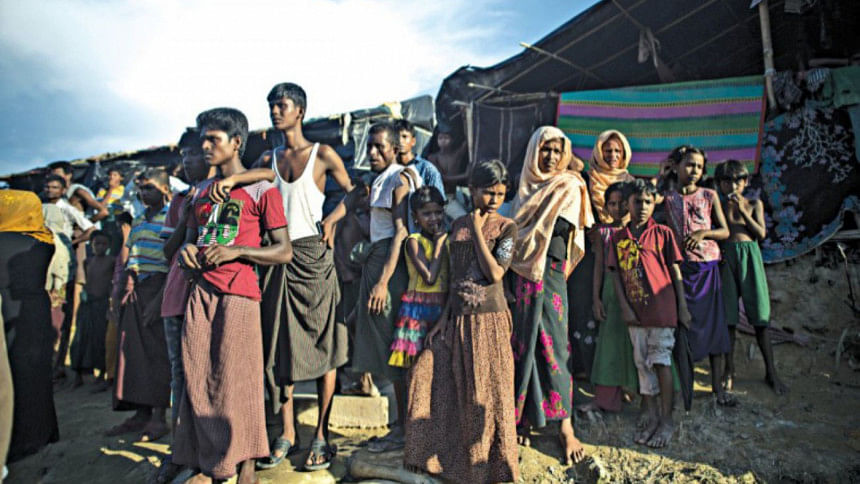
International support is vital for countries like Bangladesh to make the shift to inclusive education ensuring education for Rohingyas living in Bangladesh, said a new global report today.
Bangladesh, the report published by UNESCO says, is one of only two countries in the list of top 10 host countries not to provide inclusive education to refugees though Bangladesh officially does not term Rohingyas as refugees.
Some 93 percent of the education sector's US$26 million requirement for the Rohingya emergency in Bangladesh was not met in 2017, while the food security sector exceeded its target.
The 2019 Global Education Monitoring (GEM) Report - Building bridges, not walls - published by UNESCO, analysed the impact of the movement of people on education systems but also the impact education can have supporting societies to respond to the challenges and opportunities posed by migration and displacement.
Among the top 10 countries hosting refugees, Bangladesh has so far excluded Rohingyas from its national education system, while Pakistan has had an ambivalent stance, says the report mentioning that even there, one of the provinces, Balochistan includes refugees in its education plan.
Between the end of August 2017 and early May 2018 around 800,000 Rohingyas arrived in Cox's Bazar district fleeing targeted violence in Rakhine state, Myanmar.
Over 90 percent resides in spontaneous and makeshift settlements or host communities in over 1,600 locations in the Cox's Bazar, a district close to the Myanmar border.
The government of Bangladesh also has come a long way in changing its approach, the report observed.
For decades, Bangladesh refused to recognize the majority of Rohingya residing in the country since 1978 as refugees.
Bangladesh, according to the report, was reluctant about addressing their education needs, did not accept international assistance, to the extent that it would dismantle centres set up by humanitarian organisations, and it was sensitive on the language of instruction.
In 2016, Bangladesh revised its Strategy for Myanmar Refugees and Undocumented Myanmar Nationals, listing education as an intervention area for the first time.
This encouraged humanitarian efforts and sensitised local authorities before the massive influx.
The report has not only listed problems but also collected evidence from all over the world about changes of heart. It mentioned that governments are rapidly embracing the inclusion of refugees in their education systems.
Bangladesh, along with Malaysia and Thailand, has not ratified key treaty commitments to non-discrimination, says the report. Without this legal status and protection, Rohingya children are often denied access to education.
Instead, education for refugees continues to be in separate, community-based or private schools, which may or may not be certified.
The report cited the government's reluctance to support non-UN agencies providing language services during the Rohingya crisis, a key element for inclusion.
Globally, only a third of the funding gap for refugee education has been filled.
Had the international community used only humanitarian aid, then a tenfold increase in the share education receives would have been necessary to meet refugees' education needs, says the report.
The report called for development aid to help fill the gap and provide much needed long-term and predictable resources to national education systems to support refugees and host communities.
Director of the Report Manos Antoninis said considerable changes are being made in countries from Chad and Uganda to Lebanon and Turkey to let refugees attend school alongside with nationals, which they are not yet seeing in Bangladesh, Pakistan or Thailand.
"Positive steps were taken to list education as an intervention area for the first time in 2016, but the government must now lead on that initiative and stop treating refugees differently," said Antoninis.
Antoninis continued: "Bangladesh is signing up to the two new global compacts on refugees and migrants which shows that they recognize education as an opportunity. We hope this will be a much-awaited turning point away from discrimination in education".
Internal Migrants & Slums
Mass migration to slums has left millions without basic services, including public education in Bangladesh.
Out of school rates for children and adolescents in Bangladeshi slums in 2016 were twice as high as in other urban areas, says the report.
A slum settlement survey in Dhaka, Bangladesh, showed that there were fewer than 300 government primary schools in slums, and only about one-quarter of slums were estimated to have a government school.
These needs are going to grow, says the report mentioning that a government census showed that, between 1997 and 2014, slums increased from 3,000 to 14,000.
Globally, the 2019 GEM Report estimates that there could be 80 million more children in slums, equivalent to 2.6 million classrooms of children by 2030.
Internal Migrants & Seasonal Workers
In Bangladesh, more than 2.6 million rural migrant workers are employed in construction outside the agricultural seasons in 2010.
Such seasonal migration can disrupt education and expose children to child labour and workplace hazards, forcing them to leave school.
Internally Displaced
Earthquakes, storms, floods and rising sea level damage 900 schools each year in Bangladesh, on average.
A household and school survey around the time of the 2004 flood showed that, while 30 percent of schools closed at some point because of flooding, about 15 percent closed for two weeks or more.
Affected schools were closed an average of seven days more than in the previous year.
On days affected schools were open, attendance was one-third lower.
The report praised the government's aim to make its education systems prepared and responsive to such disasters.
The report recommended protecting the right to education of migrants and displaced people, include migrants and displaced people in the national education system, understand and plan for the education needs of migrants and displaced people and represent migration and displacement histories in education accurately to challenge prejudices.
The report suggested initiatives to prepare teachers of migrants and refugees to address diversity and hardship, harness the potential of migrants and displaced people and support education needs of migrants and displaced people in humanitarian and development aid.

 For all latest news, follow The Daily Star's Google News channel.
For all latest news, follow The Daily Star's Google News channel. 


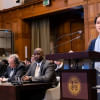
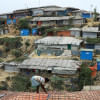
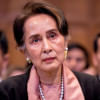
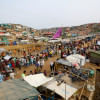

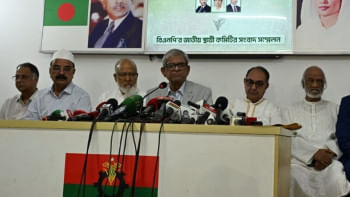
Comments